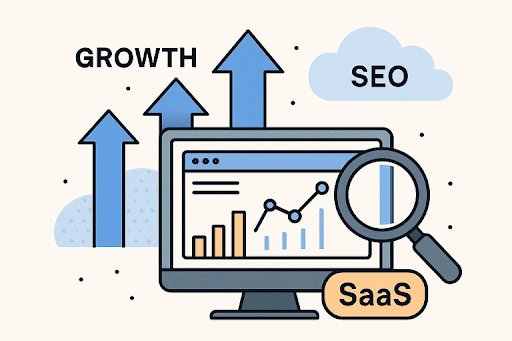In the intricate world of Android file systems, certain content paths may look mysterious to the everyday user. One such example is the seemingly cryptic path: content://cz.mobilesoft.appblock.fileprovider/cache/blank.html. At first glance, this string might appear technical or even intimidating, especially if you’ve stumbled across it unexpectedly while exploring your device or analyzing app behavior. However, when we take a closer look, this file path opens up a subtle conversation about how modern Android applications work, how they manage data, and what it means for your daily mobile experience. Let’s gently explore what this file path actually represents, why it may appear on your device, and what role it plays in the broader scope of app functionality particularly in relation to app-blocking or productivity tools.
A Soft Introduction to Android Content URIs
To understand this specific path, it helps to start with the basics. On Android devices, many applications use what is known as content URI. These Uniform Resource Identifiers begin with the word content:// and serve as a standardized way for apps to reference data, especially files, that are stored within an app’s sandboxed environment. This system ensures that apps handle their files securely and privately. Unlike traditional file paths that may start with /storage/ or /sdcard/, a content URI is used when apps want to share or access files through a content provider, which is a secure layer that allows certain forms of file exchange between apps or internal processes.
What does cz.mobilesoft.appblock.fileprovider indicate?
Moving deeper into the path, let’s consider the middle portion: cz.mobilesoft.appblock.fileprovider. This part indicates the app package responsible for this URI. In this case, the app in question is likely AppBlock – Stay Focused, developed by a company named MobileSoft based in the Czech Republic (hence the “cz” domain prefix).AppBlock is a well-known productivity tool designed to help users control their screen time. It allows users to block distracting applications and websites during certain periods. It’s a gentle digital assistant for those trying to maintain better focus and work-life balance. The term fileprovider here refers to a secure Android component that AppBlock uses to temporarily share or access certain files like cached web pages or logs, while keeping those files isolated from the main file system.
The Role of /cache/blank.html
The final part of the URI, /cache/blank.html, adds more context to the discussion. The /cache/ directory typically holds temporary data that an app might generate for performance or convenience. These cached files aren’t usually meant for direct user interaction, but rather help the app run smoothly or avoid repeated downloads. The file blank.html is, as its name implies, a simple HTML file that likely contains minimal or no content just a blank page. But why would AppBlock create or reference a blank HTML file?
Why Would AppBlock Use blank.html?
AppBlock, and similar applications that control or restrict access to content, often use blank pages as part of their internal workflow. For instance, when trying to block a distracting website, the app might intercept the browser’s attempt to load that site and instead redirect it to a harmless, locally stored file such as blank.html. This redirection avoids loading the real content while giving the user a clean, simple visual (a blank page) rather than an error message. It is a quiet and elegant way to enforce digital boundaries without disrupting the user experience. So, the content://cz.mobilesoft.appblock.fileprovider/cache/blank.html path is not harmful, suspicious, or intrusive. It is a silent enforcer of focus a background mechanism that gently nudges the user away from distractions by showing them nothing at all.
Is It Safe to See This Path on My Device?
Yes, absolutely. If you encounter this file path on your device perhaps while reviewing browser logs, app data, or certain debug tools there’s no cause for concern. This path represents a controlled and intentional process used by the AppBlock application to carry out its functionality. It does not represent malware, spyware, or any unauthorized access. It is simply a way the app handles internal resources. Moreover, since it resides in the cache folder, it is temporary. Android may remove it at any time to save space or reset memory.
Can I Delete This File or Path?
Technically speaking, you do not need to and likely cannot delete this file directly. Cached files are automatically managed by Android. If for any reason you wanted to clear this file (such as freeing up space or troubleshooting app behavior), you can do so by clearing the AppBlock app cache from your device settings.
Here’s a soft walkthrough:
- Open your Settings.
- Go to Apps or Applications.
- Find AppBlock from the list.
- Tap on Storage & Cache.
- Choose Clear Cache.
This will remove temporary files like blank.html without affecting your saved preferences or app usage data.
When Might You See This URI in Action?
You might come across content://cz.mobilesoft.appblock.fileprovider/cache/blank.html in a few different scenarios:
- If you are using a browser and AppBlock redirects a website to this blank page.
- While debugging app logs or running analytics that involve URI tracking.
- When examining crash reports or app usage data from third-party tools.
Unless you’re actively monitoring your device’s inner workings, it’s unlikely you’ll ever see this path. Still, its presence is just a soft reminder of how quietly and efficiently some apps help guide your digital behavior in the background.
How Does This Relate to Digital Wellness?
In a broader sense, this blank HTML file is symbolic of a growing movement in tech: digital mindfulness. Tools like AppBlock don’t just shut down apps or block sites aggressively. Instead, they aim to reshape behavior gently. Redirecting to a blank page is far less jarring than showing error pages or intrusive alerts.This small design decision reflects a thoughtful approach one that prioritizes peace of mind while maintaining the user’s autonomy. It offers a quiet space rather than a noisy barrier.
Conclusion
The path content://cz.mobilesoft.appblock.fileprovider/cache/blank.html may look technical and complex, but at its heart, it is a soft, invisible mechanism designed to support healthier digital habits. It demonstrates how even the simplest files like a blank HTML page can be used with purpose and care in modern app design. In an age where attention is constantly pulled in many directions, tools like AppBlock serve as a gentle reminder that sometimes, the best thing we can do is see nothing at all. A blank page. A pause. A breath. Understanding these subtle processes deepens our appreciation for how technology can be designed not just to do more, but to help us be more present.











